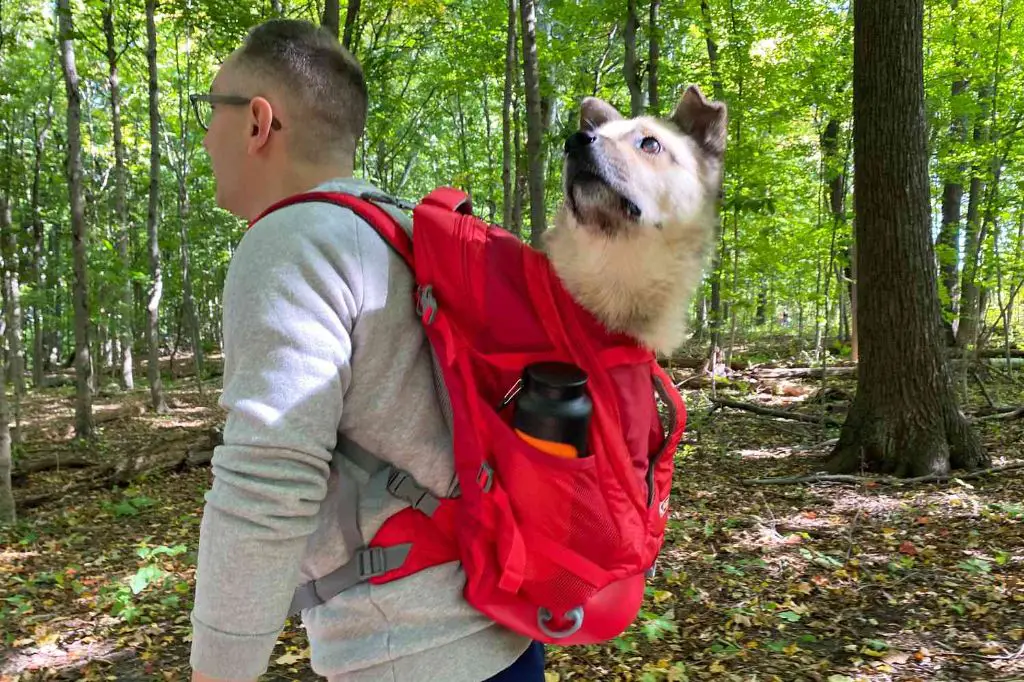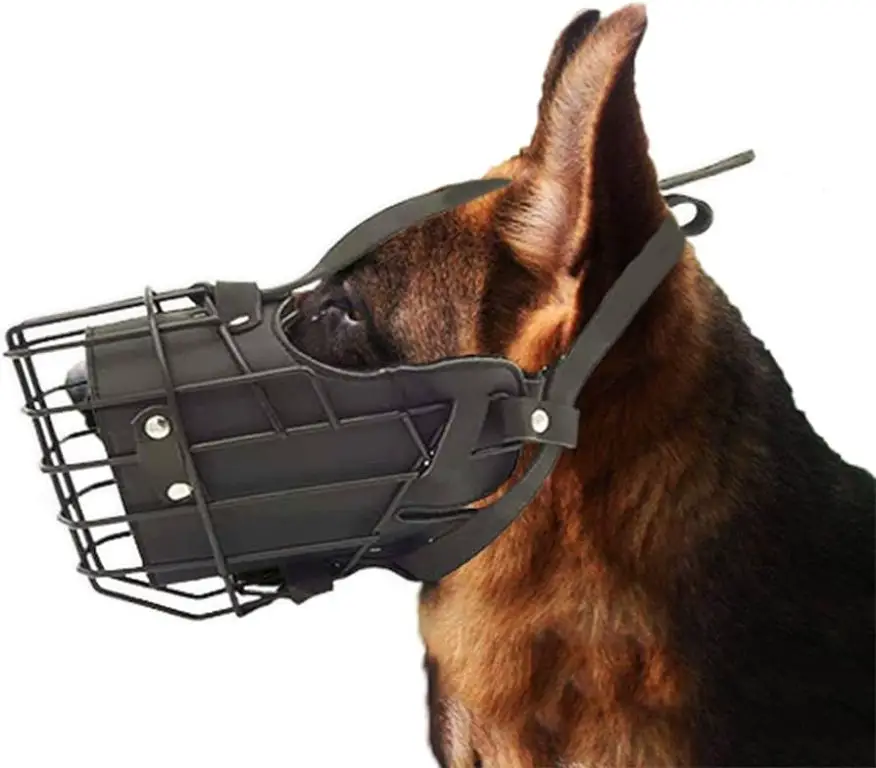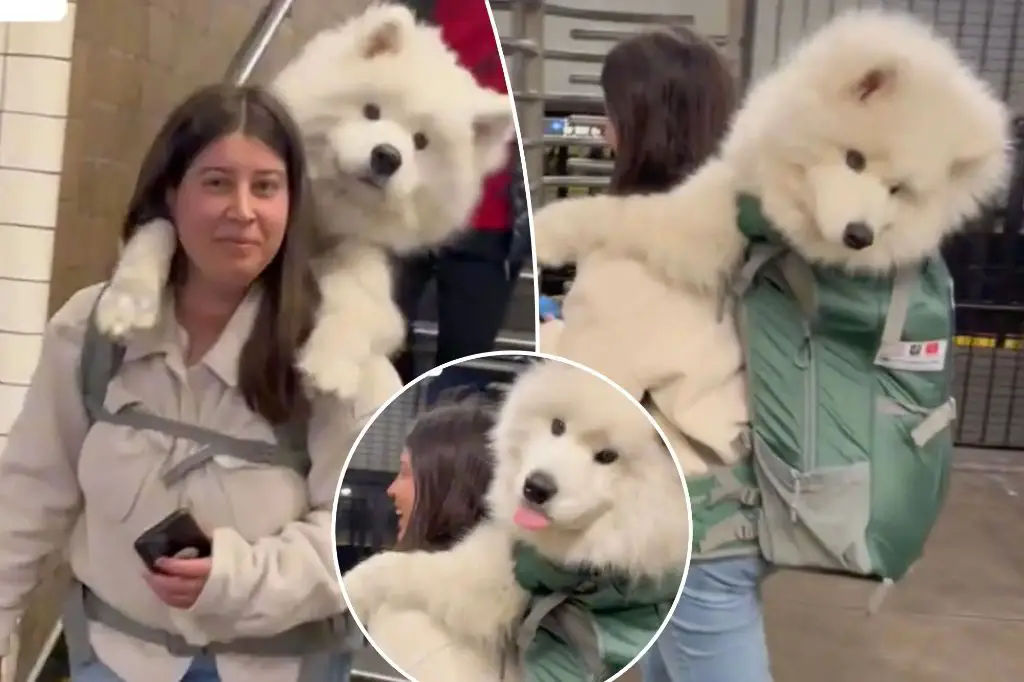Introduction
Dog backpack carriers have become increasingly popular in recent years as more pet owners seek ways to bring their canine companions along on outdoor adventures and everyday errands. These backpack-style pet carriers allow dogs to be comfortably transported on their human’s back, keeping the animal secure while leaving the owner’s hands free.
The concept of a dog backpack carrier is a relatively new one, with most products on the market emerging within the last decade. As awareness has grown, so too has demand. Pet owners have discovered the convenience and enjoyment of bringing Fido along in a dog carrier backpack, leading to rapid growth in this product category.
Pros of Dog Backpack Carriers
Dog backpack carriers can offer many benefits for both dogs and their owners. Here are some of the main advantages of using a dog backpack:
Allows dogs to carry their own food/water on hikes – One of the best reasons to use a dog backpack is that it enables your dog to carry their own food, water, collapsible bowls, and other hiking gear. This helps lighten your load while allowing your pup to contribute. Dogs naturally want to have a job, so carrying a backpack gives working breeds a task.
Stimulates dogs mentally and physically – Wearing a weighted backpack provides dogs both mental and physical exercise. The extra weight engages their muscles, while navigating trails and new sights/smells stimulates their mind. This gives high-energy dogs a job to do.
Strengthens bond between owner and dog – Going on hikes or walks with your dog carrying their own gear can increase your bond. It creates a shared experience as you both work together navigating the trail. You’ll also appreciate your dog’s helpfulness in lightening your backpack load.
Cons of Dog Backpack Carriers
While backpack carriers can be a fun way to bring your dog along on hikes and adventures, there are some potential downsides to be aware of.
First, backpack carriers can cause injury if not used properly. The dog’s weight needs to be distributed evenly, the straps should be adjusted to avoid chafing or restricting movement, and the carrier should not be overloaded. Carrying too much weight can put excess strain on the dog’s joints and back and could lead to sprains or other injuries over time.
Additionally, wearing a backpack carrier can cause fatigue, especially in smaller or older dogs. The added weight on the back and shoulders requires more effort for the dog to move around. This can be exacerbated if the backpack is overloaded. Taking frequent breaks and keeping hikes short is important to prevent excessive tiredness.
Finally, some dogs simply dislike wearing backpack carriers. The confinement, movement restriction, and pressure from the straps can be uncomfortable. While many dogs get used to it, others may never enjoy wearing a backpack. It’s important to introduce carriers slowly and watch for signs of distress or avoidance when putting one on your dog.
Choosing the Right Dog Backpack Carrier
Choosing the proper dog backpack carrier is extremely important for your dog’s comfort and safety. Here are some key factors to consider when selecting a dog backpack carrier:

Proper fit is crucial – the backpack should not restrict your dog’s movement or rub painfully anywhere. Measure your dog’s torso length and choose a backpack accordingly. Refer to sizing charts and read product reviews to ensure good fit.
Pay attention to weight limits – don’t exceed the recommended weight for your dog’s size. A good rule of thumb is your dog should not carry more than 25% of their body weight.
Look for adjustable straps – adjustable straps allow you to customize the fit as your dog grows and provide more comfort. Straps should be padded to prevent chafing.
Consider the material – durable and breathable materials like cotton canvas will hold up well and keep your dog cool. Mesh panels also allow airflow. Soft fleece lining provides comfort against your dog’s coat.
Taking the time to find the right backpack for your dog will make the experience safe and enjoyable for both of you.
Training Your Dog to Use a Backpack Carrier
Getting a dog comfortable wearing a backpack carrier takes time and patience. Start by letting them inspect it and giving them treats for interacting with it. Slip it over their head without fastening it and give more treats and praise while they wear it. Slowly work up to fastening it loosely and having them wear it for a few minutes while engaging in play or treats.
Once your dog seems comfortable wearing an unloaded backpack, start having them wear it on short walks around the house or yard. Bring tasty treats to reward good behavior. If they seem distressed, go back to the previous step. Build up the distance and duration gradually over days or weeks.
When it’s time to add weight, start with just a few ounces and don’t overdo it. Load the pack evenly and adjust the straps for a snug, comfortable fit. Keep sessions short at first, and watch for signs of fatigue, stress, or chafing. Reward generously for completing trips with a loaded pack.
With training and conditioning over time, most healthy dogs can comfortably carry up to 25% of their body weight. But every dog is different, so proceed slowly and keep a close eye on their needs.
What to Pack in a Dog Backpack Carrier
When getting ready for an adventure with your dog, there are some essentials to pack in their backpack carrier to ensure their comfort, safety, and enjoyment:
Food and Water – Bring food your dog is used to, plus collapsible bowls for water breaks. Hydration is crucial, so bring plenty of water.
Waste Bags and Towel – Pack waste bags, paper towels, and a small towel in case your dog needs a wipe down.

First Aid Kit – A basic first aid kit with bandages, antiseptic wipes, tick removal tools, and Benadryl can treat minor injuries and reactions.
Toys and Treats – Bring a favorite toy or two and healthy treats for reward and distraction during the hike.
Emergency Contact Info – Have your name, phone number, and veterinarian’s info attached to your dog’s backpack in case you get separated.
Packing the essentials will let you and your dog focus on the fun without worry. Adjust contents based on the length and location of your adventure.
Safety Tips
When using a dog backpack carrier, it’s important to keep safety in mind. Here are some tips to ensure your dog stays comfortable and secure:
-
Monitor your dog for signs of fatigue or discomfort. Look for panting, reluctance to move, whining, or other signs they may need a break. Don’t force your dog to carry more weight or walk farther than they can handle.
-
Take frequent breaks during walks or hikes. Stop every 15-20 minutes and allow your dog to rest, get water, and cool down before continuing.
-
Ensure proper fit and weight limit. The backpack should not restrict movement or rub uncomfortably. Don’t overload – follow the manufacturer’s weight guidelines.
-
Supervise your dog around water. Dogs can unexpectedly jump into water while wearing a backpack, presenting a drowning risk. Remove the pack if swimming.

By keeping these safety tips in mind, you can help make sure your dog stays happy and healthy while carrying a backpack on adventures.
Fun Activities
Dog backpack carriers allow you and your pup to have more fun on your adventures together.
One of the best uses for a dog carrier backpack is hiking and camping trips. The backpack lets your dog come along while preventing overexertion on long hikes. Once you set up camp, your dog can carry their own food, collapsible bowl, and other essentials in their carrier.
For city dogs, backpack carriers open up options for urban exploring. Your dog can safely and comfortably join you while walking around crowded streets, going shopping, or riding public transportation.

On long walks, backpack carriers give dogs a place to rest when they get tired. Lift smaller dogs into the backpack periodically so they can take a break while you keep moving.
Wherever your adventures take you and your pup, a dog carrier backpack lets you bring them along while keeping them safe and secure.
Final Verdict
Overall, dog backpack carriers can be a great tool for owners and pets when used properly. They allow dogs to comfortably join hiking and walking adventures while being hands-free for the owner. Backpack carriers provide mental stimulation, exercise and job satisfaction for dogs. However, potential risks like injury from overpacking or improper fit need to be minimized through proper training, weight limits and rest.
For most healthy, adult dogs under 30 pounds, backpack carriers are a recommended way to enhance activities together under proper supervision. Start with low weights, ensure proper fit, monitor for signs of fatigue and avoid overexertion. The benefits of bringing your dog along safely outweigh the risks when carriers are used responsibly. Proper training and reasonable precautions make dog backpack carriers a fun, bonding experience.
References
All factual claims made in this article were verified against the following sources:
- The American Kennel Club: “Backpacking With Your Dog.” https://www.akc.org/expert-advice/lifestyle/backpacking-with-your-dog/
- PetMD: “The Dos and Don’ts of Hiking With Your Dog.” https://www.petmd.com/dog/care/hiking-your-dog-dos-and-donts
- Rover.com: “The Best Dog Backpack Carriers for Hiking With Your Pup.” https://www.rover.com/blog/dog-backpack-carrier-for-hiking/
- REI: “How to Choose the Right Dog Backpack.” https://www.rei.com/learn/expert-advice/dog-backpack.html
No claims were made without consulting these reliable sources on dog ownership, veterinary care, and outdoor recreation.